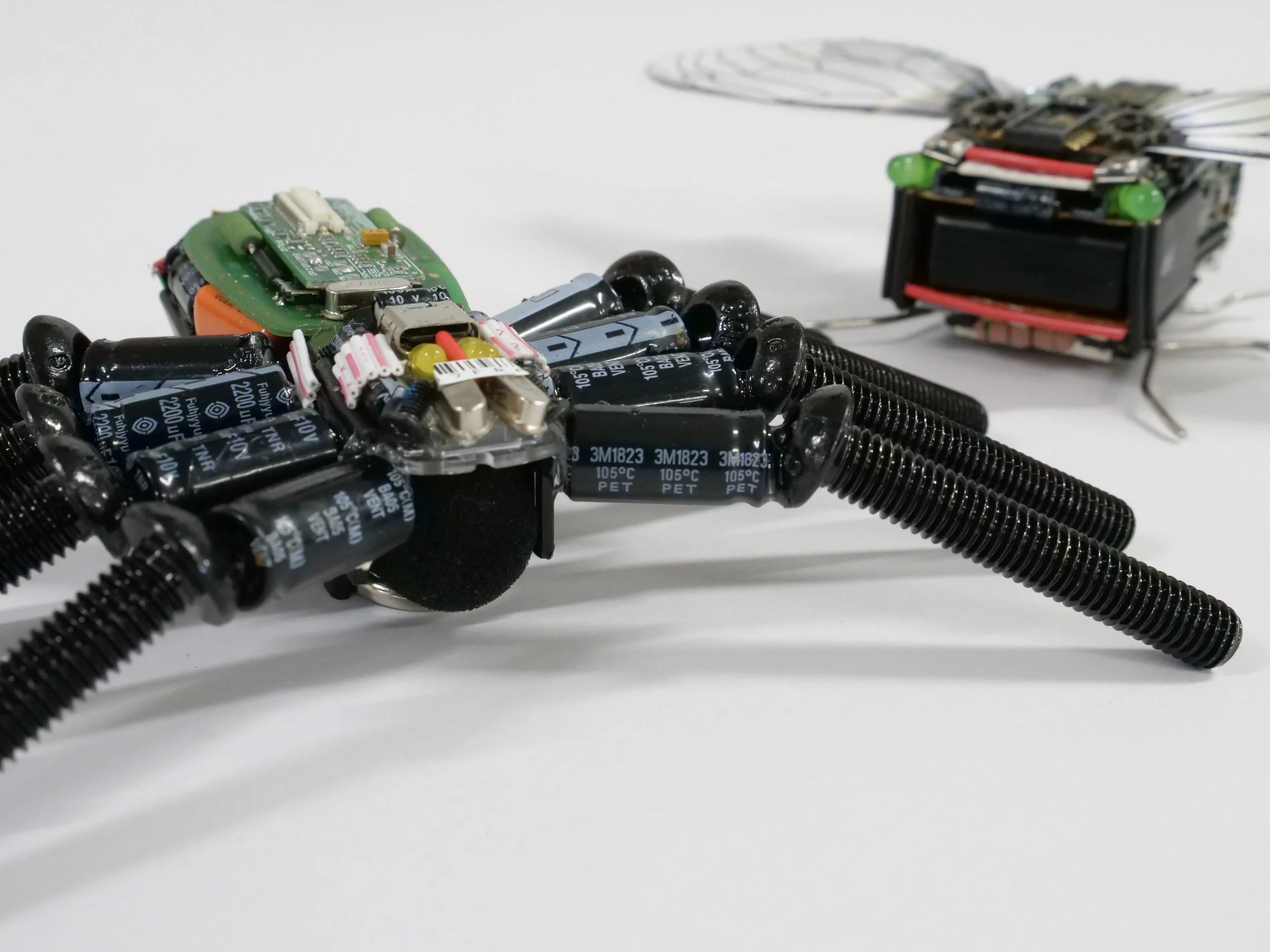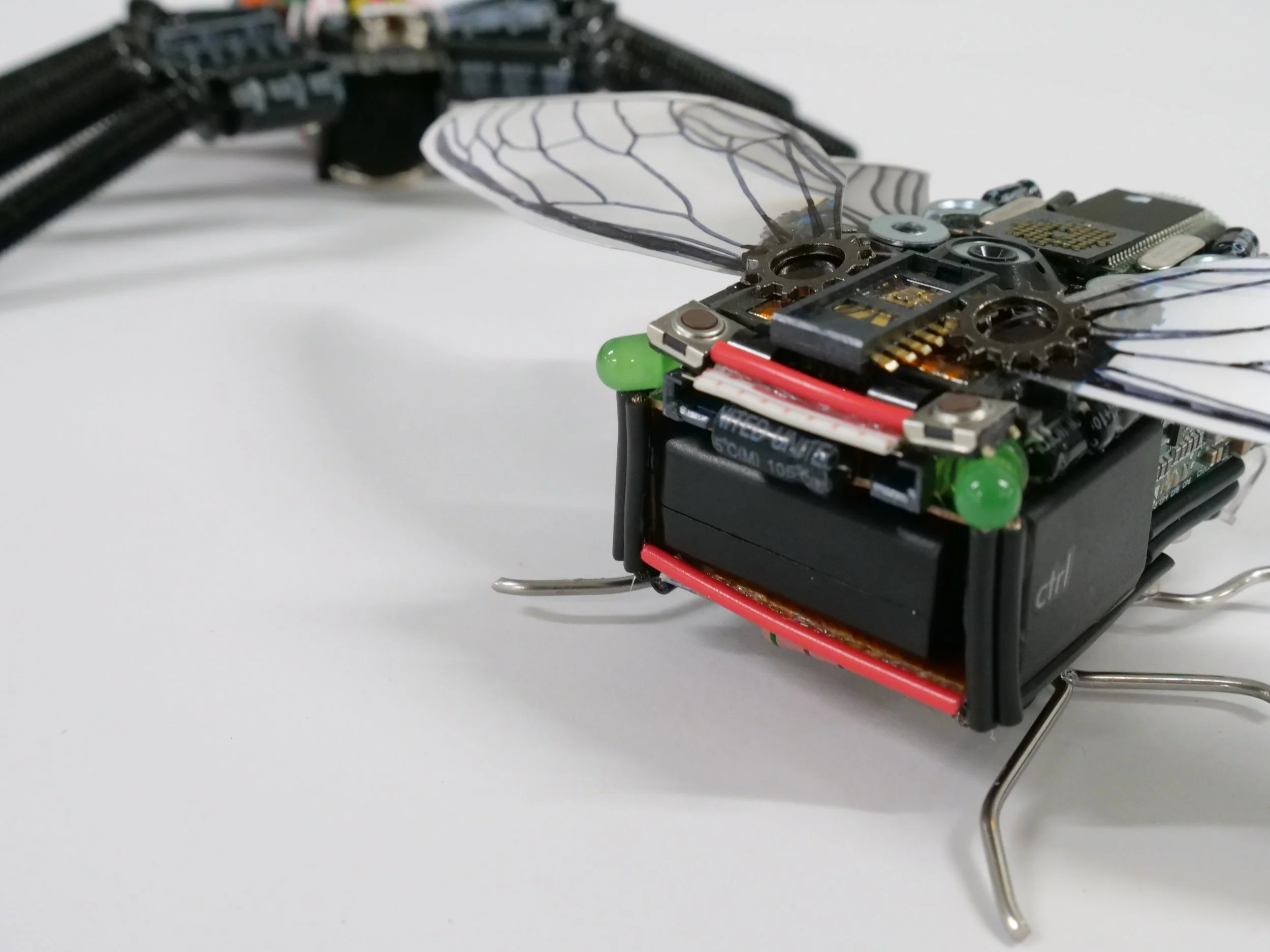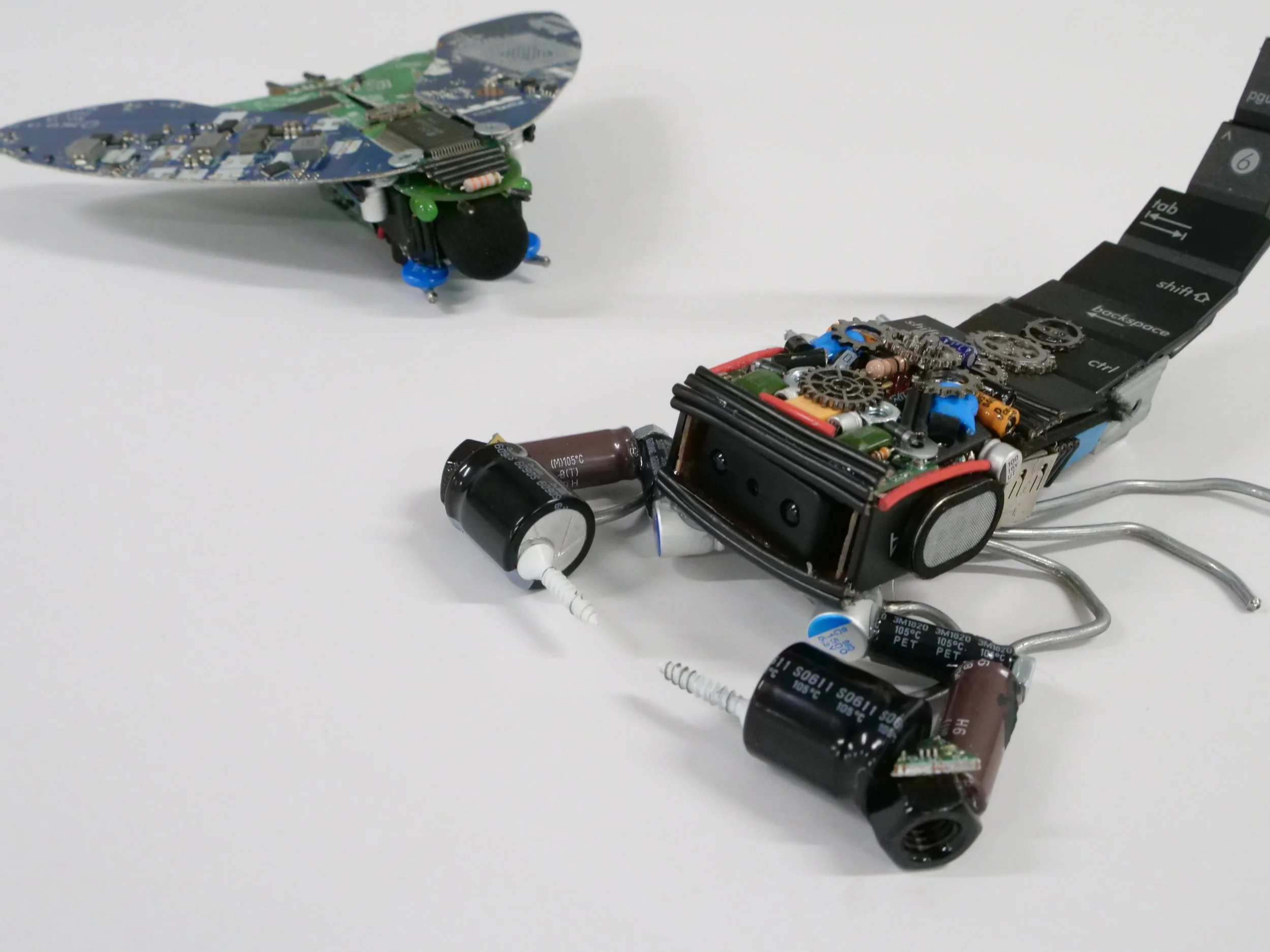Is Something Bugging You?
“Is something bugging you?” is a speculative piece that suggests a future in which surveillance has been mobilised in the form of arthropods. Arthropods (the phylum which includes insects and arachnids) are absolutely everywhere- in your house, your room, your bed. It would be impossible see all of them, so what if they could see you? What if they could record you? The piece is comprised of four arthropods, collectively called Machinae all created from recycled computer and electronic parts, fitted with working cameras and microphones that record the audience as they view the work. The Machinae are displayed as if they are in a natural science museum, paired with typewritten specimen tags that include their genus and species names.
Stylistically, this project was partially inspired by RoboBee X-Wing, developed by Noah T. Jafferis and his colleagues. In the plight of scientists trying to replicate insects, they have been unable to truly capture their delicate and precise bodies. In order for the RoboBee to fly, it requires power, however it is too small to carry a battery. This has been mitigated through the use of solar panels (Breuer, 2019). The RoboBee X-Wing is one centimetre tall and looks nothing like an insect. However, I loved the exposed circuits and cords that truly betrayed any similarity to natural bees. Subsequently, I chose to use recycled electronics, sourced from friends, the Good Sammy’s warehouse and the West Metro Recycling Centre.
Although my sculptures could have been suggestive of arthropods, my passion for bugs drove me to adhere to anatomy. the process of assembly, I used many reference images of each arthropod from different angles.
Each Machinae is based on the biggest arthropod in Australia of that order, however they have been renamed to suggest that a new species has been created. For example, the tarantula is based on Selenocosmia crassipes, which was renamed as Selenocosmia machina. This retains the genus, confirming that the Machina is a part of that tarantula family, however is a different species. Machina is the Latin translation of machine.
Another major influence of this project was Jeremy Bentham’s Panopticon prison. This is a design for a prison that allows for every cell to be watched at any moment. The panopticon has been theorised in relation to surveillance, especially through the lens of Michel Foucault. The suggestion is that people are able to be controlled if they could be watched
at any moment (Galič, 2017). The Machinae serve as the watchtower in the middle of the panopticon prison. If a Machinae could be watching at any moment, control is acquired. Speculatively, these bugs have a job- their job is to gather information. The piece suggests a narrative of a malicious government, similar to 1984. The Machinae are created as machines to watch the average person and assure they are abiding by rules and laws. However, surveillance is not a fiction- we are surrounded by cameras and microphones at all times. Our phones can track our location, recognise our faces and study our interests. It is hopeful to position this level of surveillance as fiction, even though we are not far off.
The Machinae are fitted with two different types of surveillance equipment. The moth and the tarantula have microphones while the cicada and the scorpion have cameras. The microphones are connected to my own phone, and audio is transmitted when I press record, while the cameras film onto an SD card. The surveillance equipment was central to the project as I wanted the audience to be surveilled rather than feel surveilled. If it were possible with my budget, time and capabilities, I would have considered to have a screen where the footage the Machinae were taking was displayed. However, I have also considered that streaming the footage would encourage the audience to have fun in front of the cameras, rather than consider the sinister nature of surveillance, and question what would be done with the footage. Rather, the aim was to unsettle the audience. In a gallery situation, the small scale and intricacy of the bugs would encourage the audience to look closely and intently at each sculpture. Then, the audience may recognise that there are cameras looking back at them, or they may read where the species name says machina. They would leave the exhibit wondering if they had been watched, where the footage was going and would hopefully be truly unsettled.
The process of creating the Machinae was a learning process. The assembly was straightforward, with obvious struggles when finding the right pieces for the right spots. The process was similar to solving a puzzle without a set solution. The hardest part was learning how to create a working circuit to create the glowing LED eyes. Between the cicada and the tarantula, my first and last circuits, my technique improved greatly. I learnt how to consider the poles of the LED lights, how to connect switches, the best wattage of soldering iron and the most effective ways to connect wires and assets.
Overall, “Is something bugging you?” explores ideas of surveillance and panopticism in relation to arthropods and their elusive but abundant nature. With inspiration from
RoboBees, insects and arachnids, I have created a series of four bugs that can (and will) watch you.
References
Jafferis, Noah. 2019. "Untethered flight of an insect-sized flapping-wing microscale aerial vehicle." Nature 570: 491-95. https://doi.org/10.1038/s41586-019-1322-0
Breuer, Kenny. 2019. "Flight of the RoboBee." Nature 570 (7762): 448-49. https://doi.org/10.1038/d41586-019-01964-3
Galič, Maša. 2017. "Bentham, Deleuze and Beyond: An Overview of Surveillance Theories from the Panopticon to Participation." Philosophy & Technology 30 (1): 9-37. https://doi.org/10.1007/s13347-016-0219-1


